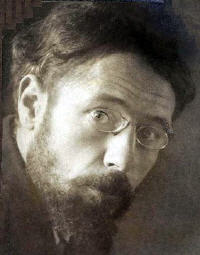
Pierre Bonnard was a French Post-Impressionist painter remembered for his ability to convey dazzling light with juxtapositions of vibrant color. “What I am after is the first impression—I want to show all one sees on first entering the room—what my eye takes in at first glance,” he said of his work. Born on October 3, 1867 in Fontenay-aux-Roses, France, Bonnard studied law at the Sorbonne, graduating in 1888. During this time, he was also enrolled at the École des Beaux-Arts but left to attend the Académie Julian in 1889. At this more open-minded painting academy, Bonnard met Maurice Denis, Paul Sérusier, and Édouard Vuillard, among others. Together with these artists he helped from a group known as the Nabis, who were influenced by Japanese prints and the use of flat areas of color. Early on in his career, Bonnard was better known for his prints and posters than for his paintings. Moving to the South of France in 1910, over the following decades, Bonnard receded from the forefront of the art world, mainly producing tapestry-like paintings of his wife Marthe in their home. Late works of Bonnard, such as The Terrace at Vernonnet (1939), more closely resembled a continuation of Impressionism than other avant-garde styles of the era. Because of this, at the time of his death on January 23, 1947 in Le Cannet, France, the artist’s work had been largely discounted as regressive. Today, his works are held in the collections of the Hermitage Museum in St. Petersburg, the Metropolitan Museum of Art in New York, the Neue Pinakothek in Munich, the Musée d’Orsay in Paris, and the Tate Gallery in London, among others.